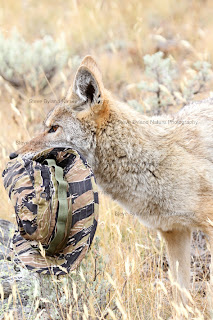Canon 7d - 300mm f/4.5 1/400th Second ISO 500
I’m known for a couple of things; a twisted sense of humor, the occasional good photo, and the creative use of stumps as perches for my shots. I don’t really much care for shots of birds on feeders, so I try to put something more attractive close by for them to pose on for me.
Placement of tripod with Branch - Canon Powershot
It may take a bit of getting used to, but you start to get a feel for what birds will land on and where best to place them. I often strap a log or branch to an old tripod so that I have more flexibility with the final positioning. Play around a bit until you get the light the way you want it.
Close-up of tripod - Canon Powershot
























